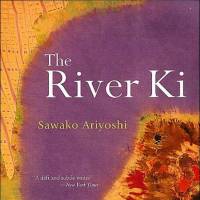When we read Japanese history it's easy to forget that the revolutionary changes that washed through the country from the 19th century into the 20th all took place within a single human life span.
The River Ki, by Sawako Ariyoshi.
256 pages
KODANSHA, Fiction.
Sawako Ariyoshi takes this notion as the premise for her 1959 novel "The River Ki." The book follows the life of Hana, the daughter of a wealthy family in Wakayama, from her teenage betrothal to her elderly senility.
Raised to value the customs of old Japan, rapid modernization soon leaves her behind. Her daughter, Fumio, embraces feminism and Japan's new international outlook, rebelling against her mother's folk wisdom and superstition. Fumio raises her children abroad, ever on the move, until the outbreak of World War II forces them back to Japan.
Written in bright and humorous prose, this novel is sharp and subtle, using the female line of the family to encapsulate the transfiguration of Japan. The men of the family serve as politicians, soldiers, businessmen, but their stories are peripheral. The heart of Japan, Ariyoshi argues, has never been the offices or debating chambers, but the home.
At the start of the novel, Hana's wedding is thought auspicious because her husband's family live downriver from her own: It is bad luck to move against the flow of the River Ki. The image stands for the flow of history. Hana fights the current and her family is swept away from her. For better or worse, the river only runs in one direction.
Read archived reviews of Japanese classics at jtimes.jp/essential.



